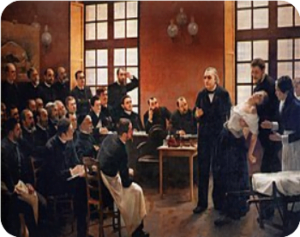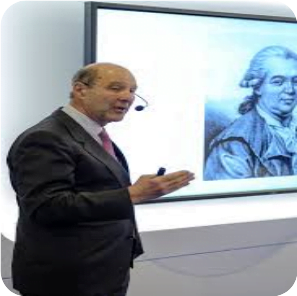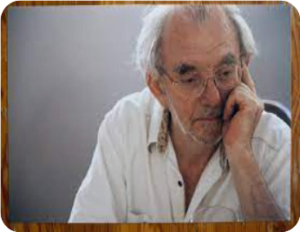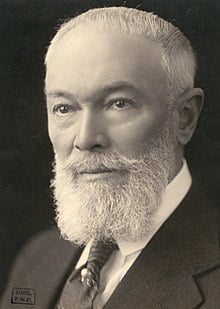Conversation 14: Understanding hypnosis in the context of the internalized figures
Greetings
Let's first recall that in the model we proposed for the "self" in the 2nd and 13th conversations in the blog, we emphasized that we must first differentiate between the "primary self", which is actually the basic biological nucleus consisting of several innate structures and which is subject to development during life. and the "social self", which is a structure that develops during a person's exposure to social influence, and consists of internalizations of figures significant to the person [included in the "secondary self"], originating either from external groups or from imaginary groups related, for example, to a character from a story, from a myth, from a movie, etc. that were having a considerable effect on the person.
The "secondary selves" contained within the framework of the social self include: 1] the variety of representations of the "I" that originate from attitudes and feelings towards the self and its representations in different periods of life 2] the representations of internalized characters that often originate from significant characters that the person is exposed to during his life but as mentioned there may also be imaginary characters which are represented in books, films, etc. that had a considerable influence on man. 3] representations of the "subculture" [subculture refers to social influences in the milieu [environment] in which the person lives and are not necessarily related to a specific person]. A variety of representations of these introverted characters can be described in different metaphors, one of which is a "board of characters".
If so, we also maintain that within us, in our minds, the social "self" is represented by a "directorate" or "board" of internalized figures.
These internal figures, most of which are internalizations of influential figures in external reality, are shaped during life, and sometimes following a crisis or trauma or events related to that figure [or alternatively during a significant development such as creating a new meaning for life and re-evaluating positions], there may even be several versions of that figure during the character’s life. This is how various external figures that influence the person are internalized, but the most important internal internalization is that of what we will call the “Dictator Self”. [See conversation 11] Here we are talking about internalizing a character that has a great influence and shapes the person for good and/or bad, which has a great influence on the board of internal characters that build the “social self". We assume this internal dictator to have a decisive role and a profound influence on the internalization of external figures [or in professional parlance, external objects]. The dictator’s attitudes play a central role in making decisions about the internalization of characters. He decides whether the internalization should be rejected or, if accepted, in what form it will be internalized. In other words, in a certain sense, we assume that this influential figure is also a kind of internal censor. It should be emphasized that we are not talking or conjecturing concretely about the presence of figures in the inner world as a sort of little people but of their representations whose nature and manner of representation in the brain still requires research. We will also note that although we call this figure a "dictator", except for a certain type, his characteristics are not the same as that of a dictatorial ruler over a certain country, but it’s implied that this figure is dominant and influential among the "Directorate of Characters". Finally, we note that the person is not usually aware of the existence of this board.
The treatment itself, which is focused on the person’s reference groups, sets as one of its important goals to bring to the person's consciousness social influences that he is subject to and that are largely unconscious. In essence, the treatment allows the patient to better understand the representations of the significant figures internalized within him, to raise them to consciousness and help him achieve a better adaptation to the society in which he lives.
This time we will ask how the process of hypnosis can be understood using this model?
A] As it’s well known, hypnosis has been used in various forms for centuries, but it was not until 1843 that the Scottish surgeon Dr. James Bride coined the term that became popular: "Hypnosis."
Hypnosis is generally defined as a process in which a hypnotist, with the help of suggestion, induces in the hypnotized an experience of various changes whether in feeling, perception, cognition, emotion, and/or behavior. In this process, the hypnotized goes through a process of focusing the concentration and paying attention to the hypnotist and the suggestiveness he induces in the patient.

Jean-Martin Charcot, a neurologist at the Pitier Salpetrere Hospital in Paris, demonstrating hypnosis in a hysterical patient in the 19th century.
By the way, Dr. David Spiegel from Stanford University, a psychiatrist and leading researcher in the field of hypnosis, claims that during hypnosis, the activity in the area of the brain that helps people switch between tasks calms down. It seems, says Spiegel, that the same area disconnects from another area that is responsible for self-reflection and daydreaming – and this may be why, in his opinion, hypnotized people are not concerned about who they are or what they are doing.

Dr. David Spiegel, psychiatrist and hypnosis researcher
B] Second, we asked, what happens in a hypnotic process to the "social self" which, as mentioned, consists of internalized figures within which frequently emerges a "dictator self”?
It seems to us that in hypnosis it is desirable that the hypnotist:
1] The hypnotist will first explore the characteristics of the inner “directorate” internalized in the "social self" and especially get the profile of the dictator self with whom he will conduct a dialogue within the framework of hypnosis.
This is not easy to do and is usually not done. Remember the case from 1975 of a hypnotized girl named Yaffa Svisa who remained in a hypnotic coma after being hypnotized by an entertainment hypnotist, and only after about a week of not waking up from the coma, Dr. Maurice Kleinhaus, who is seen by many as the father of hypnosis in Israel, managed to bring her out of the hypnotic coma. Dr. Maurice Kleinhaus told one of us [Y.L.] that, among other things, he repeatedly repeated for several hours the sentence "I am a better and stronger hypnotist than the one who hypnotized you". On the assumption that the figure of the entertainment hypnotist was internalized as a character in the patient's character “directorate”, we assume that Kleinhaus proclaimed himself as higher figure in the hierarchy, and it is possible that from the girl's point of view he actually conducted suggestive dialogues with her inner “directorate”, including the most influential dictator selves, whose wish was that the girl remains in a regressive state of coma. However, it should be noted that this is only a hypothesis.
In an article in memory of Dr. Kleinhaus, the psychologist Nahi Alon who worked with him wrote:
"His work … with Yaffa Svissa began by observing her when she was on the hospital floor and he recognized the only movement in her body – fluttering. He added a suggestion to the observation: "I am Dr. Kleinhaus. I see that you are not moving, but there is movement in your eyelids, I know you were under hypnosis. I'm a doctor and a hypnotist. I want to help you and I'm a better hypnotist than the man who hypnotized you in the show. If you hear me, blink once. If you don't hear me, blink twice" …. She blinked and that's how the first therapeutic relationship was created…In Svissa's case, he understood what happened to her with a psychodynamic understanding combined with a systemic vision: in the stage show she entered deep hypnosis due to high hypnobility; The stage hypnotist brought her to complete catalepsy [from a state of limb stiffness] and sat on her – an unbearable situation on a symbolic level for an adolescent in general and a religious one in particular. This conflict, combined with animosity towards the hypnotist and a desire to punish him, prevented her from returning to vigilance and getting out of the situation. ….. The treatment began with establishing contact and continued in a marathon process of many hours a day for several days, in order to neutralize the variety of forces that created the problem…"
The psychologist Nachi Alon's assumption that she wanted to punish the entertainment therapist seems to us to be only a hypothesis, since it is possible that the difficulty was more related to the girl herself and the value system of a dominant figure or figures in her, so that a man sitting on top of her [remember that this is a religious girl] was seen as completely unacceptable, and thus the entertainment therapist was excluded from the cooperation of the dominant character with him. However, the Dr. Kleinhaus’s suggestion stating: "I am a better and stronger therapist than the one who hypnotized you" seems to us to be the beginning of a dialogue of cooperation with a dominant figure or figures in the girl's directory of figures by saying that he is good, meaning that he does not wish to harm her and therefore it is possible to create cooperation with him.

Dr. Maurice Kleinhaus [1927-2014]
2] The hypnotist will reassure an internalized dictator self that everything will remain under the control of the dictator self and that the purpose of hypnosis [usually medical hypnosis] is to help the patient.
3] The hypnotist will ask for his permission to perform hypnotic and suggestive interventions, including post-hypnotic suggestions.
4] The hypnotist will connect with the dictator self and position himself a kind of "extension" of him.
We believe that the hypnotist does not take over the dominant character [the dictator self], but rather serves as an assistant, a supporter, and an operator of the person's board of directors [in other words, the hypnotist is actually an extension of the dominant character operating on behalf of it], while the dominant character gives him trust and supports his actions on the assumption that he wants to help hypnotized in some way in a manner that matches the dominant character's attitudes. That’s why, when a person is asked to do immoral things, the dominant figure will impose censorship and prevent it, and indeed it is accepted that it is not possible to convince a hypnotized person to do things that are clearly contrary to his moral attitudes.
It is interesting that a paranoid attitude does not usually allow the hypnotist to carry out hypnotic processes.
We assume that this is the dictator self that does not allow hypnotic influence. This observation strengthens perhaps the hypothesis that the hypnotist does not “overrule” the dominant figure in the “directorate” of the patient's internalized figures, but serves as an assistant or a supporter, while the dominant figure gives him trust, and, on a contrary, when a person is asked to do immoral things, the dominant figure will prevent it.
One of the interesting phenomena manifested in hypnosis is dissociation.
Dissociation [detachment] describes situations in which certain emotions, sensations, memories and thought systems disconnect from consciousness. Dissociation can describe a temporary disturbance, of various strength, in the conscious contentedness of the person to his physical or sensory or emotional reality whereas during a dissociative disorder there is an impairment in the integration between one or more of the components of awareness: identity, behavior, emotion, sensations and knowledge.
Dissociative states may appear in normative situations such as a state of sinking into inner fantasy or hypnosis] but also following the use of hallucinogenic drugs, delirium, epilepsy and more, but usually following a stressful situation or a traumatic event.
Dissociation most likely develops along systems built during evolution for the emotional survival of behavioral systems, some of which are defensive in nature and related to the survival of the individual when he is under immediate threat, while others deal with daily life and the survival of the entire species.
Much emphasis was placed on the concept of dissociation by the psychiatrist Pierre Janet. Thus, at the end of the 19th century, Pierre Janet described dissociation as an altered state of consciousness expressed in a disrupted integration of psychological functions. Clinically, such a disorder includes compartmentalization symptoms such as amnesia, dissociation symptoms such as depersonalization/derealization, and structural dissociation of the personality with changes in the sense of self [we will discuss these disorders in a separate conversation in the future].

Pierre Marie Felix Janet [1859-1947] French psychologist and philosopher
We hypothesize that the self in its parts can be dissociated or cut off between its parts. Thus it is also possible that the “board of internalized figures” of the social self that is not normally in person’s awareness will undergo dissociation, so that part of it will become conscious. For example, in certain situations, the hypnotist encourages regression to younger ages, here it is possible, for example, that a certain "I" representation from an early age [one of the variety of "I" representations that originate from attitudes and feelings towards the self from different periods of life] will rise to consciousness. Or it is possible that one of the representations of the internalized characters that usually originate from significant characters that the person was exposed to during his life or even imaginary characters represented in books, movies, etc. that had a considerable influence on the person will come to consciousness at the request of the hypnotist.
It seems as if in such cases the mechanism that maintains the control of the "dictator self" is broken and another character takes the reins for a while and replaces the "dictator self". It is possible that something similar happens in multiple personality syndrome, but we will talk about that later.
Finally, we will also note that sometimes the hypnotist can even create a significant character in the “directorate of characters”, which this time the patient will be aware of, and this will have an optimal effect on him. For example, it is known about the case where an American hypnotist Milton Erickson treated a patient with a very significant inner feeling of deprivation and lacked support and comfort scince her childhood.

Milton Erickson with a patient (1901-1980)
During the therapeutic hypnotic sessions, Erickson went back with her through hypnotic regression to the years of her childhood and adolescence while he himself as a supporting and comforting figure visits her every February in her teenage years. And so, in fact, in several therapy sessions, he built an internalized supportive figure in her that accompanies her in her teenage years and provides a proper solution to the deprivation she suffered from. We assume that he actually created a new significant figure within her “board of internalized characters” that the patient was aware of and that helped her to overcome her feeling of deprivation.
A lot can still be added to the understanding of hypnosis through the set of internalized figures building the social self, but we will be satisfied with this this time looking forward to see you in the next conversation.
Dr. Igor Salganik and Prof. Joseph Levine
 Prof. Joseph Levine, M.D. is an emeritus associate professor in the Division of Psychiatry, Faculty of Health Sciences, Ben Gurion University in Israel. Prof. Levine is a certified psychiatrist with clinical experience in controlled trials of adult psychiatric disorders and in psychotherapy. He was awarded a NRSAD independent investigator grant for the study of Creatine Monohydrate in psychiatric disorders -- mainly Schizophrenia. He resides and treats patients in Tel Aviv and all of central Israel.
Prof. Joseph Levine, M.D. is an emeritus associate professor in the Division of Psychiatry, Faculty of Health Sciences, Ben Gurion University in Israel. Prof. Levine is a certified psychiatrist with clinical experience in controlled trials of adult psychiatric disorders and in psychotherapy. He was awarded a NRSAD independent investigator grant for the study of Creatine Monohydrate in psychiatric disorders -- mainly Schizophrenia. He resides and treats patients in Tel Aviv and all of central Israel.
Leave a comment